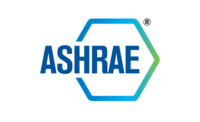In order to achieve a more environmentally friendly footprint for its new education and research campus in Narre Warren, Australia, IAPMO and the Plumbing Industry Climate Action Centre (PICAC) chose one technology rooted quite literally in the earth.
The IAPMO/PICAC Narre Warren campus is the first net zero energy education and research facility in the state of Victoria. The training facility, designed for the plumbing industry, generates all energy required to support the operation of the building on site through the incorporation of numerous renewable energy technologies.
The state-of-the-art facility houses IAPMO R&T’s Oceana research center and product testing laboratory, itself a vital conduit for innovative manufacturers of plumbing products to gain certification to applicable code and standards for their fixtures, fittings and other new technologies.
“As evidenced by the state-of-the-art facility in Narre Warren, IAPMO practices what the hydronics industry preaches — net zero with geothermal and other sustainable energy solutions,” said IAPMO COO Dave Viola.
Early in the design process, it was apparent a geothermal system offered numerous advantages to the net zero objective by tying in with other clean energy technologies, such as water heat recovery, solar hot water heating, solar photovoltaic panels and geo-exchange.
PICAC Narre Warren is the first facility in Australia to utilize building foundation screw piling to source geothermal energy for the building’s heating and cooling requirements. Geothermal Industries Australia (GIA), a specialist in ground sourced thermal energy, dug 192-meter by 13-meter-deep energy piles and 28 geothermal bores were drilled to a depth of 100 meters using a new specialized Commachio drill from Italy. Together, the 220 wells are used for the ground source heat pump (GSHP) system to heat and cool the building. The GSHP system integrates thermal heat loops within the structural screw piles for geothermal heat exchange.
GIA drilled an initial 100-meter hole for a thermal conductivity test, collecting data for 48 hours in order to design the appropriate system for the facility’s location and geology. The discovery of swelling clays at deeper depths than anticipated presented a challenge, prompting the necessity of the Commachio drill and enabling crews to drive casing past the troublesome zones and keep the project on schedule. GIA achieved 100% success getting each ground heat exchanger installed to depth on the first attempt.
The building features an insulated wall design that consists of a building shell comprising precast sandwich panels on the ground floor and a lightweight metal cladding composite wall system on the first floor. This insulation system achieves an R-value that exceeds the requirements of the National Construction Code and assists in maintaining thermal comfort.
“I am certain that people from all sectors of the building industry, the energy sector, all levels of government and the wider community will want to see the system in operation,” said Managing Partner and General Manager at GIA, Clint Patzack. “There is a genuine business case supporting geothermal energy as a source of heating and cooling. We are going to see an increase in interest in this proven technology in Australia, particularly as energy costs from traditional sources continue to escalate and the focus on clean energy increases.”




